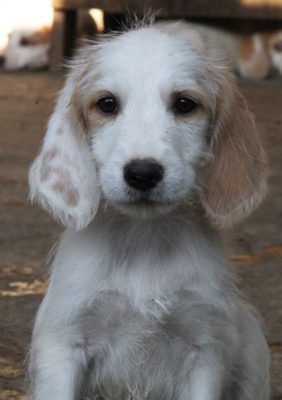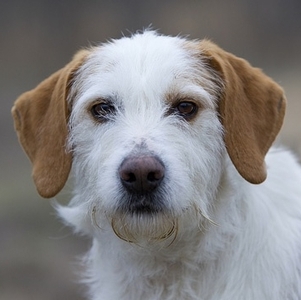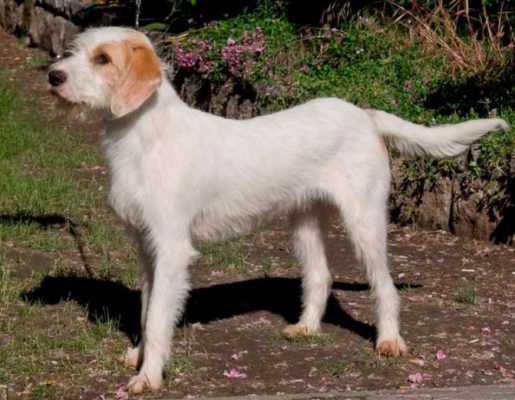Istrian Coarse-haired Hound
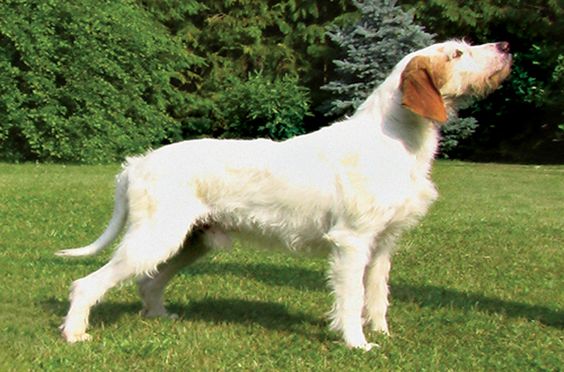
The character of the Istrian Coarse-haired Hound is quite balanced. It is an active and curious dog. Nowadays, the breed is less and less often chosen as a pet. The Istrian Coarse-haired Hound is much more appreciated as an indispensable reliable partner in the hunt. It will have no problem becoming an affectionate and loyal friend to any family member with proper training.
Table of Contents
Breed Information
| Another Name | Istrian Rough-coated Hound |
| Origin | Croatia |
| Height | Males 52-56 cm Females 46-50 cm |
| Weight | 16-24 kg |
| Fur | Medium |
| Color | White with reddish-brown spots |
| Lifespan | 10-12 years |
| FCI Classification | Scent hounds and related breeds |
| Group | Hunting dogs |
| Price | From $150 |
Breed Photos
Origin History
There are many opinions about the beginning of the formation of the rock. Images on rocks and written mentions originate deep from antiquity. The coarse-haired version of the Istrian Hound is not as popular as the short-haired one. Accordingly, there is less information about its origin. The breed owes its name to the peninsula in the northern part of Croatia – Istria.
By the middle of the 19th century, researchers began breeding a new breed with a ringing voice. Then they crossed the Istrian smooth-haired hound with the French coarse-haired hound. The breed was introduced at the show in Vienna in 1866. Istrian Coarse-haired Hounds were described in detail closer to the beginning of the twentieth century. At that time, they were often used by the Croatian hunters for hare and fox hunting. One of the Istrian Coarse-haired Hound differences is that it can easily hunt larger game, such as deer or wild boar.
By 1920 the breed was registered in the Croatian Breed Book, and in the 1960s, the breed was officially recognized by the Fédération Cynologique Internationale. The standards of the short-haired and hard-haired hound breeds are different, but the differences are only in the length of the coat and some features of the character. After the disintegration of Yugoslavia, Croatia had a long dispute with Slovenia for the right to be considered the birthplace of the breed. Ultimately, this dispute was resolved in 1999 at the FCI meeting in favor of Croatia. It is also inadmissible that two varieties of Istrian hound are crossed with each other. Nowadays, the breed is popular not only in Croatia but also in Italy.
Appearance
The Istrian Coarse-haired Hound is an ideal representative of the hunting dog. The physique is a strong, powerful, and healthy skeleton. The body is a moderately extended format. The head and muzzle look harmonious; there are no folds and wrinkles. Oval eyes, dark in color with a very attentive and concentrated look. A characteristic feature of the breed – thick and shaggy eyebrows, creates the impression of a serious expression of the muzzle. The ears are thin and floppy, elongated in shape, narrowing towards the end. The back is straight. The chest is broad. The belly is slightly taut. The limbs with well-developed musculature. The tail saber shape, high planted. The wool over the whole body is of different lengths from 5-10 cm. Matt and bristly (gives a slightly shaggy appearance). Thick undercoat. They were allowed only snow-white color with pronounced red-brown spots (usually on the ears, along the body, and under the tail).
Character
The character of the Istrian Coarse-haired Hound is quite balanced. It is an active and curious dog. Nowadays, the breed is less and less often chosen as a pet. The Istrian Coarse-haired Hound is much more appreciated as an indispensable reliable partner in the hunt. It will have no problem becoming an affectionate and loyal friend to any family member with proper training. Early socialization is necessary to ensure that the Istrian Coarse-haired Hound is not too aggressive with other animals. His main instinct is to chase, prey, and work for results. Excellent for keeping in a private home, in a spacious enclosure. Not bad development also guarding instinct. The Istrian Coarse-haired Hound is more sensitive to cold, so it can adapt to “yard” life and excellently shows itself for hunting in a frosty season.
Care
There is nothing supernatural about caring for an Istrian Coarse-haired Hound. Stick to the standard recommendations, and don’t forget about hygienic procedures. Clean eyes and ears at least once a week. Frequent water procedures are unnecessary to avoid harming the condition of the pet’s skin. Hair shedding is seasonal, and combing out the hair several times a week should be sufficient. Claws are usually self-cleaning (if that’s not enough, trim them about once a month). The Istrian Coarse-haired Hound needs long walks, active games, and physical activities.
Training
The Istrian Coarse-haired Hound is an intelligent and very stubborn dog. You will need a lot of free time and patience to achieve a certain result in training. Find the right approach to training. Most importantly, it should be based on trust and positive emotions; then, you will succeed. The four-legged hunter will surely please you with a new command learned; you need to make a little more effort.
Common Diseases
For many years of breed research, experienced researchers and veterinarians have never found the Istrian hound susceptible to any diseases. In old age, the breed can suffer from urolithiasis, which can be caused by improper nutrition.
Nutrition
To avoid health problems and become overweight, the diet of the Istrian Coarse-haired Hound must be balanced. With the high physical exertion required on the hunt, the pet’s needs also increase. Feeding should be regular and with sufficient protein and all necessary vitamins.
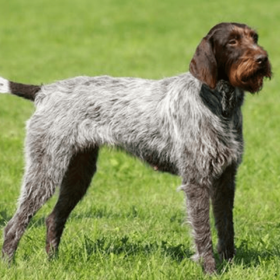 Český Fousek
Český Fousek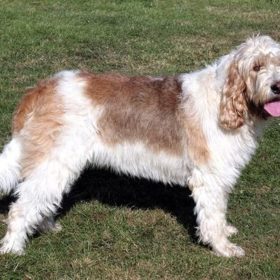 Otterhound
Otterhound Spinone Italiano
Spinone Italiano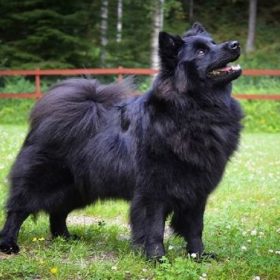 Swedish Lapphund
Swedish Lapphund German Wirehaired Pointer
German Wirehaired Pointer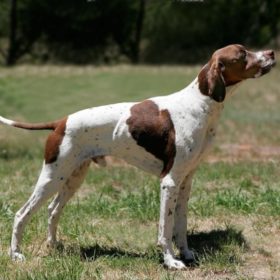 Pointer
Pointer